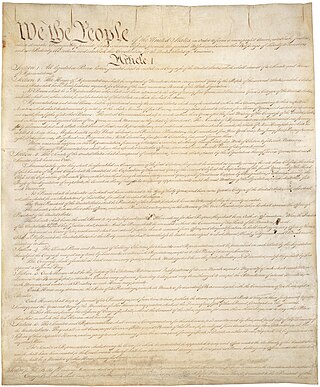The article
The article was published as an "aside," without attribution (as is often the case with brief student-authored law review articles). Its author was University of Pennsylvania law student William S. Stevens, who invested his legitimate legal commentary with pseudo-gravitas ridiculing the pomposity often found in American law reviews. The article is "genuinely funny, perhaps one of the funniest pieces of true scholarship in a field dominated mostly by turgid prose and ineffective attempts at humor." [3]
Stevens's subject was the infield fly rule, a rule of baseball added about 1895 to close a loophole which in certain circumstances gave the defensive team an unfair advantage. [lower-alpha 1] "Mr. Stevens described the infield-fly rule as a technical remedy for sneaky behavior that would not have occurred in the days when baseball was a gentlemen’s sport played for exercise." [2]
Footnotes

Law review articles are notoriously heavy with footnotes. Stevens offered a "raft of footnotes dropped in like legal punch lines." [2] His sense of parody was evident from the first word of his text, "The," which he footnoted to the word's entry in the Oxford English Dictionary . [1] :n.1 His second footnote recited the infield fly rule in its entirety, followed by a dry observation that "Depending upon the circumstances, other rules which may or may not apply to a particular situation include, inter alia, [the Federal Rules of Civil Procedure], Rule Against Perpetuities, and Rule of Matthew 7:12 & Luke 6:31 (Golden)." [1] :n.2
Many of the article's 48 footnotes are non-comedic, although some include such humor as:
- "For a discussion of origins, see generally Scopes v. State [the so-called "Monkey Trial"]; Genesis 1:1-2:9." [1] :n.6
- "Raised by this statement [that "a batter with the 'speed of an ice wagon' hit a pop fly"] is the issue of the speed of an ice wagon in both relative and absolute terms. Such inquiry is beyond the scope of this Aside." [1] :n.26
- "To be contrasted with the doctrine of 'clean hands' [i.e., a doctrine in the Anglo-American system of equity] is the 'sticky fingers' doctrine." [The footnote goes on to discuss spitballs]. [1] :n.37
Argument

Stevens ambitiously tried to mix understated humor with serious legal comment. He explained that the article's purpose was "to examine whether the same types of forces that shaped the development of the common law also generated the Infield Fly Rule." Noting that England was the birthplace both of common law and of proto-baseball, Stevens discussed the Knickerbocker Base Ball Club, the first team using codified baseball rules, in 1845. For the club's members, the "rules which governed their contests clearly indicate that the game was to be played by gentlemen. Winning was not the objective; exercise was." As winning, however, came to be valued over exercise when the game spread beyond its gentlemanly origins, "written rules had to be made more and more specific, in order to preserve the spirit of the game." [1] :1476
Pointing out examples of dubious play from professional baseball in the 1890s that led to the infield fly rule, the article turned to its legal analogy. Stevens argued that the infield fly rule "emerged from the interplay of four factors, each of which closely resembles a major force in the development of the common law." [1] :1478
Stevens's Factors Behind Development of the Infield Fly Rule
| # | Factor | Baseball Development | Legal Parallel | Note | Reference |
|---|---|---|---|---|---|
| 1 | Sporting Approach | Gentlemen playing a game neither use trickery nor try to profit from their unethical conduct | Due process, or justice Itself | The "gentleman's code" is the moral basis for the principle of fair play in baseball | [1] :1478-9 |
| 2 | Formal and Legalistic Code of Rules | Baseball is not played only by gentlemen | Formalism of the common law writ system | Particular written rules become necessary to force those not voluntarily using fair play nonetheless to follow it | [1] :1479 |
| 3 | Scope of Umpire's Powers | Umpire may make calls in situations not fitting within a particular rule | Chancellor's equity powers | There are limits to the discretionary powers of the umpire and the chancellor | [1] :1479-80 |
| 4 | Piecemeal Resolution | Rules committee addressed problems as they arose | (1) Common law precedents used to make novel remedies; (2) Legal adjustments via legislation | Unlike non-common-law legal systems, issues are remedied incrementally and not through overarching reform | [1] :1480 |
Conclusion

Stevens concluded his article by comparing the "dynamics of the common law" and the development of "one of the most important technical rules of baseball." Both, he argued, were "essentially conservative," creating change only when a problem arose and only to the extent needed. The article ended: "Although problems are solved very slowly when this attitude prevails, the solutions that are adopted do not create many new difficulties. If the process reaps few rewards, it also runs few risks." [1] :1480-81






